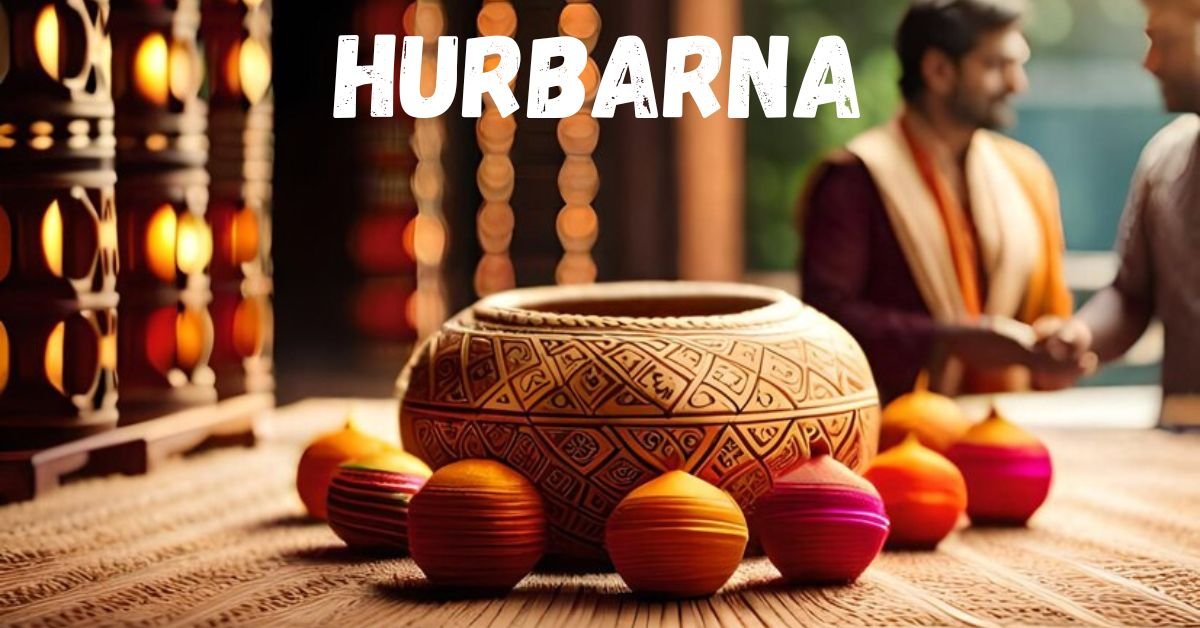Lifestyle
Exploring Peñiculs: Their History, Significance, and Future

Peñiculs have intrigued many people over the centuries. These unique objects, woven into the fabric of various cultures, offer a glimpse into human history and creativity. They are more than just artifacts; they are symbols of tradition, artistry, and innovation.
History of Peñiculs
Peñiculs have a rich history dating back to ancient times. Early civilizations used them for practical purposes, but their designs and materials evolved as societies advanced. Initially, peñiculs were simple and functional, crafted from readily available materials. Over time, they became more intricate and decorative, reflecting the cultural and technological advancements of different eras.
Traditional Peñiculs
Traditional peñiculs hold a special place in many cultures. They are often associated with rituals, ceremonies, and daily life. Each region has its own style, influenced by local materials and techniques. For instance, in Asia, peñiculs might be made from silk, while in Africa, they feature vibrant patterns and bold colors. These traditional designs not only serve practical purposes but also preserve cultural heritage.
Modern Peñiculs
The advent of technology has transformed the production of peñiculs. Modern methods allow for mass production, ensuring that these items are accessible to a wider audience. Advanced machinery and innovative materials have expanded the possibilities, making peñiculs more versatile and durable. Today, they are used in fashion, interior design, and even digital art.
Peñiculs in Art
Peñiculs have long been a source of inspiration for artists. Historical art pieces often feature these objects, highlighting their aesthetic and cultural significance. From ancient murals to Renaissance paintings, peñiculs have been depicted in various forms, each piece telling a story about the era’s values and beliefs. Contemporary artists continue to reinterpret peñiculs, creating modern works that bridge the gap between past and present.
Peñiculs in Literature
Literature, too, has embraced the symbolism of peñiculs. They appear in many classic novels and poems, representing various themes and emotions. In some stories, peñiculs symbolize heritage and beauty, while in others, they might represent conflict or change. Their presence in literature underscores their cultural resonance and the depth of their symbolism.
Crafting Traditional Peñiculs
The making of traditional peñiculs is an art form passed down through generations. Artisans use natural materials such as fibers and dyes, chosen for their quality and significance. The craftsmanship techniques involve meticulous work, ensuring that each peñicul is unique. This process not only creates beautiful items but also preserves the skills and knowledge of the past.
Modern Production of Peñiculs
Modern production methods have streamlined the creation of peñiculs. Industrial techniques and machinery allow for faster and more efficient production, making these items more affordable and accessible. Quality control is a critical aspect of modern production, ensuring that each peñicul meets high standards of craftsmanship and durability.
Economic Impact of Peñiculs
The production and trade of peñiculs have significant economic implications. Countries like China, India, and Italy are leading producers, each contributing to the global market with their unique styles and techniques. The export and import of peñiculs support economies, foster international relations, and promote cultural exchange.
Local Economies and Employment
The peñicul industry provides numerous employment opportunities, especially in regions where traditional methods are prevalent. Artisans, designers, and factory workers all play vital roles in this sector. The industry also supports community development, with profits often funding local projects and improving living standards.
Environmental Impact of Peñiculs
Sustainability is an essential consideration in the production of peñiculs. Eco-friendly materials and practices are gaining popularity, reducing the industry’s environmental footprint. Efforts to minimize waste, such as recycling and upcycling, are becoming more common. However, challenges remain, including the need to address pollution and waste generated by production.
Sustainable Practices
Producers are increasingly adopting sustainable practices to mitigate environmental impact. Using organic fibers and natural dyes helps reduce harm to the environment. Additionally, recycling and upcycling initiatives are gaining traction, promoting a greener future for the industry.
Challenges and Regulations
Despite positive strides, the production of peñiculs still faces environmental challenges. Governments and organizations are implementing regulatory measures to ensure ethical and sustainable practices. Compliance with these regulations is crucial for balancing economic growth with environmental responsibility.
The Future of Peñiculs
The future of peñiculs looks promising, with innovations and trends shaping the industry. Technological advancements, sustainable practices, and evolving consumer preferences will influence the next chapter of this fascinating story. As peñiculs continue to evolve, they will undoubtedly remain a significant part of our cultural heritage.
Conclusion
Peñiculs are much more than objects; they are cultural artifacts that reflect human ingenuity and creativity. From their ancient origins to their modern applications, they continue to captivate and inspire. The peñicul industry, with its blend of tradition and innovation, holds exciting possibilities for the future.
FAQs
What are peñiculs?
Peñiculs are cultural artifacts with a rich history, used for various practical and decorative purposes across different cultures.
How are peñiculs made?
Traditional peñiculs are crafted using age-old techniques and natural materials, while modern ones are produced with advanced machinery and methods.
What is the cultural significance of peñiculs?
Peñiculs hold cultural significance as symbols of heritage, beauty, and artistic expression.
Are there eco-friendly peñiculs?
Yes, eco-friendly peñiculs are made using sustainable materials and practices, such as organic fibers and natural dyes.
What is the future of the peñicul industry?
The future of the peñicul industry is promising, with innovations in technology and sustainability shaping its development.
Lifestyle
Fiskning: A Deep Dive into the Art and Science of Fishing

Fishing, known as “fiskning” in Swedish, is more than just a pastime; it’s a blend of tradition, skill, and nature. From ancient civilizations to modern-day enthusiasts, fishing has evolved but remains a cherished activity for many. This comprehensive guide will explore the various aspects of fiskning, including its history, techniques, benefits, and more. Whether you’re a seasoned angler or new to the sport, this article will provide valuable insights into the world of fishing.
The History of Fiskning
Fishing has been a crucial part of human survival for millennia. Early humans used simple tools like spears and nets to catch fish, which were a primary food source. Over time, fishing methods and equipment became more sophisticated. By the Middle Ages, fishing had become both a vital industry and a regulated activity, with laws governing fish populations and fishing practices. Today, fiskning continues to be an important cultural and recreational activity worldwide.
Different Types of Fishing
Fishing encompasses a variety of techniques, each suited to different environments and types of fish. Understanding these methods can enhance your fishing experience.
Freshwater Fishing
Freshwater fishing occurs in lakes, rivers, and streams. It’s a popular choice for anglers due to its accessibility and the diversity of species available. Common targets include bass, trout, and catfish. This type of fishing can be done from the shore or a boat, and it often requires specialized gear such as spinning rods and reels.
Saltwater Fishing
Saltwater fishing takes place in oceans and seas, offering opportunities for both inshore and offshore fishing. Inshore fishing targets species like flounder and redfish near the shore, while offshore fishing aims for larger species such as tuna and marlin. Saltwater fishing often requires more robust equipment and specialized boats.
Fly Fishing
Fly fishing is a technique where anglers use lightweight artificial flies to catch fish. This method is particularly effective for species like trout and salmon. It requires skillful casting and a good understanding of insect hatches and fish behavior. Fly fishing is often practiced in rivers and streams, but it can also be adapted for still waters.
Ice Fishing
Ice fishing is practiced on frozen lakes and rivers. Anglers cut holes into the ice and fish through them using specialized equipment. This method is prevalent in colder climates and targets species like perch, walleye, and northern pike. Ice fishing requires appropriate gear to handle the cold and maintain safety on the ice.
Essential Fishing Techniques
Fishing techniques vary widely depending on the type of fishing and the target species. Here are some popular methods.
Casting
Casting involves throwing a baited hook or lure into the water and retrieving it. This technique is versatile and used in both freshwater and saltwater fishing. Proper casting technique is crucial for effectively reaching and enticing fish.
Trolling
Trolling is the process of dragging baited lures or baits behind a moving boat. This method covers a large area and is effective for catching species that roam in open water. It’s commonly used in offshore fishing.
Jigging
Jigging involves using a weighted lure, known as a jig, which is moved up and down in the water. This technique is useful for targeting fish near the bottom, such as cod and grouper. Jigging can be done from a boat or from the shore.
Spinning
Spinning is a technique that uses a spinning reel to cast and retrieve lures. It’s popular for its ease of use and effectiveness in catching various fish species. Spinning rods and reels are commonly used in freshwater fishing.
Fishing Equipment and Gear
Having the right equipment is essential for a successful fishing experience. Here are some key items to consider.
Fishing Rods and Reels
Fishing rods and reels come in various sizes and types, each designed for different fishing techniques and species. Rods are categorized by their length, power, and action, while reels can be spinning, baitcasting, or spincast. Selecting the right combination of rod and reel is crucial for effective fishing.
Fishing Lines and Hooks
Fishing lines vary in strength and material, such as monofilament, fluorocarbon, and braided lines. Choose a line based on the type of fishing and target species. Hooks come in different sizes and shapes, so select hooks that match your bait and target fish.
Baits and Lures
Baits can be live, such as worms or minnows, or artificial, like plastic worms and metal spinners. Lures mimic the appearance and movement of prey to attract fish. The choice of bait or lure depends on the fish species and water conditions.
Tackle Boxes and Accessories
A tackle box is essential for organizing and storing fishing gear. It should have compartments for hooks, lures, lines, and other accessories. Additional items like pliers, fishing scissors, and a landing net can also be helpful.
Finding the Best Fishing Spots
Identifying good fishing locations can significantly impact your success. Here are some tips for finding the best spots.
Lakes and Rivers
Lakes and rivers are often stocked with fish and provide accessible fishing opportunities. Look for areas with structures like rocks, vegetation, and drop-offs where fish are likely to congregate.
Coastal Areas
Coastal fishing offers opportunities for both inshore and offshore fishing. Check local regulations and research the best times to fish based on tides and seasonal patterns.
Reservoirs and Ponds
Reservoirs and ponds are man-made bodies of water that can be excellent for fishing. They are often stocked with various fish species and provide easy access points for anglers.
Fishing Regulations and Conservation
Responsible fishing involves adhering to regulations and practicing conservation. Here are some guidelines to follow.
Fishing Licenses and Permits
Most areas require a fishing license or permit. Make sure to check local regulations and obtain the necessary permits before fishing.
Catch and Release Practices
Catch and release helps sustain fish populations by returning caught fish to their habitat. Use barbless hooks and handle fish gently to minimize stress and injury.
Sustainable Fishing Practices
Follow sustainable fishing practices to protect aquatic ecosystems. Adhere to size and bag limits, avoid overfished areas, and use environmentally friendly gear.
Fishing Safety Tips
Safety is a key consideration when fishing. Here are some tips to ensure a safe and enjoyable experience.
Weather Awareness
Check weather conditions before heading out. Avoid fishing in severe weather or dangerous conditions to ensure your safety.
Personal Safety
Wear a life jacket when fishing from a boat or in deep water. Use sunscreen, insect repellent, and appropriate clothing to protect yourself from the elements.
Equipment Safety
Inspect your gear before each trip. Ensure that your rod, reel, and line are in good condition to prevent accidents and improve your fishing experience.
Conclusion
Fishing, or fiskning, is a multifaceted activity that offers relaxation, adventure, and a connection to nature. From its historical roots to modern-day techniques and equipment, fishing has something to offer for everyone. By understanding the various types of fishing, techniques, and best practices, you can enhance your fishing experience and contribute to the preservation of aquatic ecosystems. Embrace the joys of fishing, respect the environment, and enjoy the many benefits that this timeless activity has to offer.
FAQs
What is the best time of day to fish
The best times to fish are typically early morning and late afternoon when fish are most active.
Do I need a fishing license
Yes, most places require a fishing license or permit. Check local regulations to ensure you comply.
What is catch and release
Catch and release is a practice where fish are caught and then returned to the water to help maintain fish populations.
What type of bait should I use
The type of bait depends on the fish species you are targeting. Common options include live bait like worms or artificial lures.
How can I improve my fishing skills
Practice regularly, learn from experienced anglers, and stay updated on fishing techniques and gear to enhance your skills.
Lifestyle
Hurbarna: Exploring the Depths of an Ancient Tradition

Hurbarna, an ancient and captivating practice, has been an integral part of human history for centuries. Rooted in rich cultural traditions, it offers a unique blend of spiritual and practical elements that continue to captivate individuals worldwide. But what exactly is Hurbarna? Why has it stood the test of time, and how does it fit into our modern lives? This article delves into the essence of Hurbarna, exploring its origins, principles, and contemporary relevance.
The Origins of Hurbarna
Hurbarna’s origins trace back to ancient civilizations, where it was deeply interwoven with daily life and spiritual beliefs. Emerging from early human attempts to understand and interact with the world around them, Hurbarna was both a means of survival and a way to connect with the divine. Over time, it evolved, absorbing influences from various cultures and adapting to changing societal norms. Its rich history is a testament to its resilience and adaptability.
Core Principles of Hurbarna
At the heart of Hurbarna lie several fundamental beliefs and practices. Central to its philosophy is the concept of balance and harmony with the natural world. Practitioners engage in rituals and ceremonies designed to align their energies with the forces of nature, seeking to achieve a state of equilibrium. Symbolism plays a crucial role, with various objects and actions holding significant meaning within the practice.
Hurbarna in Modern Society
In today’s fast-paced world, Hurbarna has found new relevance. Many people turn to it as a means of finding peace and grounding amidst the chaos of modern life. While some traditional practices have been adapted to fit contemporary lifestyles, the core principles remain unchanged. From urban settings to rural communities, Hurbarna continues to inspire and guide individuals on their personal and spiritual journeys.
The Spiritual Aspect of Hurbarna
Hurbarna is not just a set of rituals; it is a deeply spiritual practice. It involves connecting with a higher power, whether through meditation, prayer, or ceremonial acts. These spiritual connections are believed to bring about personal growth and enlightenment, helping practitioners to achieve a deeper understanding of themselves and their place in the universe.
Practicing Hurbarna: A Beginner’s Guide
For those new to Hurbarna, the journey can seem daunting. However, starting with basic steps can make the process more approachable. Beginners need only a few simple tools and materials, along with a willingness to learn and explore. Common beginner mistakes include overcomplicating rituals and neglecting the importance of intent and focus. With patience and practice, anyone can begin to incorporate Hurbarna into their daily routine.
Advanced Techniques in Hurbarna
As practitioners gain experience, they can explore more advanced techniques in Hurbarna. This includes mastering complex rituals and deepening their spiritual connections. Advanced practices often involve more intricate tools and materials, as well as a greater understanding of the underlying principles. These techniques can lead to profound personal insights and a stronger bond with the natural world.
The Role of Nature in Hurbarna
Nature is a cornerstone of Hurbarna, with natural elements playing a significant role in its rituals and symbolism. Practitioners use various natural materials, such as stones, plants, and water, to enhance their practices. This connection to nature fosters a sense of environmental awareness and stewardship, encouraging practitioners to live in harmony with their surroundings.
Hurbarna and Healing
One of the most powerful aspects of Hurbarna is its healing potential. Through various practices, it can promote physical, emotional, and spiritual well-being. Many individuals have reported significant improvements in their health and overall quality of life after incorporating Hurbarna into their routines. These healing practices are often personalized, allowing practitioners to address their unique needs and challenges.
Hurbarna in Art and Literature
Hurbarna has also made its mark on art and literature. Throughout history, it has inspired countless works of art, from intricate paintings to evocative poems. Its influence can be seen in various literary traditions, where it often serves as a central theme or a source of metaphorical richness. Notable works and artists continue to draw inspiration from Hurbarna, ensuring its presence in the cultural landscape.
Common Misconceptions About Hurbarna
Despite its long history, Hurbarna is often misunderstood. Common misconceptions include viewing it as a form of magic or superstition, rather than a legitimate spiritual practice. These misunderstandings can lead to skepticism and dismissiveness. Educating the public about the true nature of Hurbarna is crucial for fostering greater acceptance and appreciation.
Hurbarna and Community
Community plays a vital role in Hurbarna. Practitioners often come together to share their experiences, support one another, and engage in group rituals. These gatherings can create a strong sense of belonging and collective energy. Stories of communal bonding highlight the importance of these connections in maintaining the practice and passing it down through generations.
Challenges in Practicing Hurbarna
Like any practice, Hurbarna comes with its challenges. Practitioners may encounter obstacles such as skepticism from others, difficulty finding resources, or personal doubts. Overcoming these challenges requires perseverance and a supportive network. Numerous resources are available to help practitioners navigate these difficulties and continue their journey.
The Future of Hurbarna
Looking ahead, Hurbarna is poised for continued growth and evolution. As more people seek alternative spiritual practices, Hurbarna offers a unique and enriching path. Potential developments include greater integration with modern technology and increased visibility in mainstream culture. Preserving the tradition while embracing innovation will be key to its future success.
Conclusion
In conclusion, Hurbarna is a rich and multifaceted practice with deep historical roots and significant modern relevance. Its core principles of balance, harmony, and connection to nature resonate with many individuals today. Whether you are a seasoned practitioner or a curious newcomer, Hurbarna offers a journey of spiritual growth, healing, and community. Its enduring legacy is a testament to its profound impact on human life and culture.
FAQs
What is Hurbarna?
Hurbarna is an ancient spiritual practice that involves rituals and ceremonies designed to align one’s energies with the natural world, promoting balance and harmony.
How can I start practicing Hurbarna?
Begin with basic steps, such as learning simple rituals and gathering essential tools and materials. Focus on intent and practice regularly to deepen your understanding.
What are the benefits of Hurbarna?
Hurbarna offers numerous benefits, including physical, emotional, and spiritual healing, personal growth, and a stronger connection to nature.
Is Hurbarna related to any other spiritual practices?
While unique, Hurbarna shares similarities with other nature-based spiritual practices, emphasizing balance, harmony, and connection to the natural world.
Where can I learn more about Hurbarna?
You can find information through books, online resources, and communities of practitioners who share their knowledge and experiences.
Lifestyle
Kääntäbä: Unveiling the Mysteries of This Ancient Practice

Kääntäbä, an ancient and profound practice, has been shrouded in mystery for centuries. Rooted in deep cultural traditions, it offers a unique blend of spiritual and practical elements that continue to captivate individuals around the world. But what exactly is Kääntäbä? Why has it stood the test of time, and how does it fit into our modern lives? This article delves into the essence of Kääntäbä, exploring its origins, principles, and contemporary relevance.
The Origins of Kääntäbä
Kääntäbä’s origins trace back to ancient civilizations, where it was deeply interwoven with daily life and spiritual beliefs. Emerging from early human attempts to understand and interact with the world around them, Kääntäbä was both a means of survival and a way to connect with the divine. Over time, it evolved, absorbing influences from various cultures and adapting to changing societal norms. Its rich history is a testament to its resilience and adaptability.
Core Principles of Kääntäbä
At the heart of Kääntäbä lie several fundamental beliefs and practices. Central to its philosophy is the concept of balance and harmony with the natural world. Practitioners engage in rituals and ceremonies designed to align their energies with the forces of nature, seeking to achieve a state of equilibrium. Symbolism plays a crucial role, with various objects and actions holding significant meaning within the practice.
Kääntäbä in Modern Society
In today’s fast-paced world, Kääntäbä has found new relevance. Many people turn to it as a means of finding peace and grounding amidst the chaos of modern life. While some traditional practices have been adapted to fit contemporary lifestyles, the core principles remain unchanged. From urban settings to rural communities, Kääntäbä continues to inspire and guide individuals on their personal and spiritual journeys.
The Spiritual Aspect of Kääntäbä
Kääntäbä is not just a set of rituals; it is a deeply spiritual practice. It involves connecting with a higher power, whether through meditation, prayer, or ceremonial acts. These spiritual connections are believed to bring about personal growth and enlightenment, helping practitioners to achieve a deeper understanding of themselves and their place in the universe.
Practicing Kääntäbä: A Beginner’s Guide
For those new to Kääntäbä, the journey can seem daunting. However, starting with basic steps can make the process more approachable. Beginners need only a few simple tools and materials, along with a willingness to learn and explore. Common beginner mistakes include overcomplicating rituals and neglecting the importance of intent and focus. With patience and practice, anyone can begin to incorporate Kääntäbä into their daily routine.
Advanced Techniques in Kääntäbä
As practitioners gain experience, they can explore more advanced techniques in Kääntäbä. This includes mastering complex rituals and deepening their spiritual connections. Advanced practices often involve more intricate tools and materials, as well as a greater understanding of the underlying principles. These techniques can lead to profound personal insights and a stronger bond with the natural world.
The Role of Nature in Kääntäbä
Nature is a cornerstone of Kääntäbä, with natural elements playing a significant role in its rituals and symbolism. Practitioners use various natural materials, such as stones, plants, and water, to enhance their practices. This connection to nature fosters a sense of environmental awareness and stewardship, encouraging practitioners to live in harmony with their surroundings.
Kääntäbä and Healing
One of the most powerful aspects of Kääntäbä is its healing potential. Through various practices, it can promote physical, emotional, and spiritual well-being. Many individuals have reported significant improvements in their health and overall quality of life after incorporating Kääntäbä into their routines. These healing practices are often personalized, allowing practitioners to address their unique needs and challenges.
Kääntäbä in Art and Literature
Kääntäbä has also made its mark on art and literature. Throughout history, it has inspired countless works of art, from intricate paintings to evocative poems. Its influence can be seen in various literary traditions, where it often serves as a central theme or a source of metaphorical richness. Notable works and artists continue to draw inspiration from Kääntäbä, ensuring its presence in the cultural landscape.
Common Misconceptions About Kääntäbä
Despite its long history, Kääntäbä is often misunderstood. Common misconceptions include viewing it as a form of magic or superstition, rather than a legitimate spiritual practice. These misunderstandings can lead to skepticism and dismissiveness. Educating the public about the true nature of Kääntäbä is crucial for fostering greater acceptance and appreciation.
Kääntäbä and Community
Community plays a vital role in Kääntäbä. Practitioners often come together to share their experiences, support one another, and engage in group rituals. These gatherings can create a strong sense of belonging and collective energy. Stories of communal bonding highlight the importance of these connections in maintaining the practice and passing it down through generations.
Challenges in Practicing Kääntäbä
Like any practice, Kääntäbä comes with its challenges. Practitioners may encounter obstacles such as skepticism from others, difficulty finding resources, or personal doubts. Overcoming these challenges requires perseverance and a supportive network. Numerous resources are available to help practitioners navigate these difficulties and continue their journey.
The Future of Kääntäbä
Looking ahead, Kääntäbä is poised for continued growth and evolution. As more people seek alternative spiritual practices, Kääntäbä offers a unique and enriching path. Potential developments include greater integration with modern technology and increased visibility in mainstream culture. Preserving the tradition while embracing innovation will be key to its future success.
Conclusion
In conclusion, Kääntäbä is a rich and multifaceted practice with deep historical roots and significant modern relevance. Its core principles of balance, harmony, and connection to nature resonate with many individuals today. Whether you are a seasoned practitioner or a curious newcomer, Kääntäbä offers a journey of spiritual growth, healing, and community. Its enduring legacy is a testament to its profound impact on human life and culture.
FAQs
What is Kääntäbä?
Kääntäbä is an ancient spiritual practice that involves rituals and ceremonies designed to align one’s energies with the natural world, promoting balance and harmony.
How can I start practicing Kääntäbä?
Begin with basic steps, such as learning simple rituals and gathering essential tools and materials. Focus on intent and practice regularly to deepen your understanding.
What are the benefits of Kääntäbä?
Kääntäbä offers numerous benefits, including physical, emotional, and spiritual healing, personal growth, and a stronger connection to nature.
Is Kääntäbä related to any other spiritual practices?
While unique, Kääntäbä shares similarities with other nature-based spiritual practices, emphasizing balance, harmony, and connection to the natural world.
Where can I learn more about Kääntäbä?
You can find information through books, online resources, and communities of practitioners who share their knowledge and experiences.
-

 Technology5 months ago
Technology5 months agoExploring the Concept of Assumira: Understanding Its Impact and Applications great 2
-

 HOME5 months ago
HOME5 months agoNTR Share House: Redefining Community Living great 8
-

 TECH5 months ago
TECH5 months agoUnlocking the Power of Mystop: Your Ultimate Navigation Companion great 9
-

 BUSINESS5 months ago
BUSINESS5 months agoExploring the World of Kääntäjäö: Bridging Language Gaps great 7
-

 Technology5 months ago
Technology5 months agoQXEFV Demystified: How to Harness its Power for Maximum Impact great 8
-

 FASHION5 months ago
FASHION5 months agoSoleLinks: Your Ultimate Sneaker Release Companion great 7
-

 Blog5 months ago
Blog5 months agoExploring the World of HD Hole
-

 CRYPTO5 months ago
CRYPTO5 months agoCrypto Bastion 25mshenbloomberg: Your Gateway to the Future of Finance
